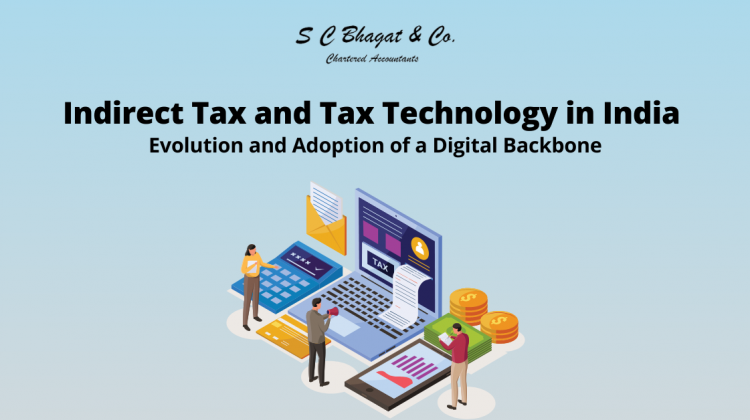The indirect tax ecosystem in India is moving into a phase of technological development with an aim to further the principle of ‘Doing Business with Ease’. The adoption of technology is now an integral part of our regular lives, and leveraging this fast-growing revolution, the government has also introduced and adopted several windows through which taxpayers can influence technology and digital solutions.
India has been constant in their efforts to introduce Tax Technology in the indirect tax ecosystem. One of the early adopters of the E-Way Bill substructure for transport, in Goods and Service Tax, the acceptance of technology has now been phased out to offer solutions in all areas of indirect taxation. This illustratively includes processes to match input tax credit; e-invoicing; working of the GST network digitally; to adopting technology-based assessments (the scrutiny side of the table) which attain and utilize business intelligence, for effective regulation.
On the Customs front, India accepted the faceless assessment system in 2019, to bring clearance for home consumption entirely online (where assessments of Bill of Entry are directed nationally, instead of the home port of import) and has now developed to illustratively introduce the entire digital solutions for obtaining benefits in regulation (like adopting a digital platform to regulate the Import of Belongings at Concessional Rate of Duty [IGCR] Rules).
The adoption of digital technology in tax compliance has equally impelled businesses to focus more attention on data and technology. For example, the input tax credit must now be taken through the digital correspondence of input and output returns of the supplier and recipient on the GST electronic portal. This behaves management to ensure that both their and the supplier returns, are filed correctly on the said portal to attain the desired compliance, without which there is a significant risk of non-allowance of input credit, leading to an increase in cash flow in the business.
Enduring the adoption of technology, today, after the achievement of an essential threshold, businesses are required to generate e-invoices with QR codes. This process includes a complicated amalgamation of uploading data, validation, generation, and circulation of the invoice. The endgame here is deep-rooted compliance, where every facade of the transaction can be tracked online, without expensing time costs on physical audits, and eradicating the shift through mountainous paperwork, to regulate compliance.
On the Customs side of the ecosystem, faceless assessments have been a game changer, reducing lodge time in the clearance of imported goods. Often in the past, imported consignments would get stuck due to the non-availability of officers for assessment or smashes in the electronic system used for clearance. Nowadays, Bill of Entry(s) are filed electronically and can be assessed by any assessment officer of customs, nationally, on the electronic portal. The supporting documents for import are also required to be uploaded electronically on the portal, making them accessible to the assessing officer with a single click of his dashboard. This has abolished the need for filing physical paperwork, making the system a bit more efficient than before. Of course, there are teething problems in every ecosystem, but the digitization framework has practically improved the supply chain.
The implementation of digital processing and compliance is slowly becoming the practical spine of the indirect tax ecosystem. In addition to connecting technology for efficiency, the Government has now adopted electronic processes to gather ‘business intelligence’ for assessing compliance done by businesses. The success of this measure is obvious, as, over the last year, the use of business intelligence had led to a significant number of input tax credit frauds being trapped, and culprits arrested. The capture of these uncertain transactions has also increased Government revenue from the charge of allied penalties and collection of the tax avoided, which in turn have led to a quantum leap in the collection figures reported. Without this digital backbone, such infringements would have been impossible to detect, as manual audits were incapable of capturing/ processing the difficulty of the transactions involved, and hence the ambiguities present were being continuously exploited for gain.
At the time the implementation of digital governance has led to an equivalent evolution of the stakeholders, platforms themselves must be reliable in their functioning and availability. Digital platforms should be more efficient and diminish substantial downtimes, as the absence of the same would defeat the complete idea of effectiveness and comfort. Businesses must also be future fronting to abstract the best out of the system, as the renovation has already begun, and tax functions must therefore put their best foot forward to grip this digital change.

